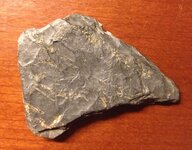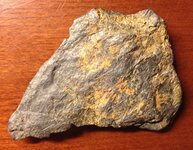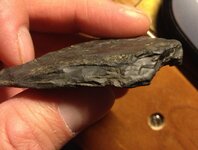Johnnoh
Sr. Member
I posted these images in the "What is it" forum and someone suggested I also post here. We have figured out that this is probably graphite, but it looks like it was shaped somewhat. I found this piece in Narragansett, RI last summer with my M6. It's almost 2" on the longest side and the other three sides look "melted". I have never really seen anything quite like this. Can anyone offer some help?
Amazon Forum Fav 👍
Attachments
Upvote
0










